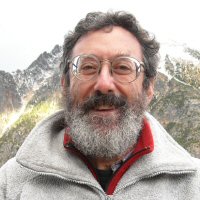The Chairman of the Standing Rock Sioux Tribe on ‘Taking a Stand at Standing Rock’
Paul Cienfuegos’ August 30th, 2016 Commentary on KBOO Evening News
(His weekly commentaries are broadcast every Tuesday evening. You can view or listen to them all at PaulCienfuegos.com, CommunityRightsPDX.org/podcast, or subscribe via ITunes. Listen to this one HERE.)
Greetings! You are listening to the weekly commentary by yours truly, Paul Cienfuegos.
Today I’m going to read an excerpt from an August 24th OpEd in the New York Times titled, “Taking a Stand at Standing Rock”, written by the chairman of the Standing Rock Sioux tribe, David Archambault II. Here’s the OpEd:
…It is a spectacular sight: thousands of Indians camped on the banks of the Cannonball River, on the edge of the Standing Rock Sioux Reservation in North Dakota. Our elders of the Seven Council Fires, as the Oceti Sakowin, or Great Sioux Nation, is known, sit in deliberation and prayer, awaiting a federal court decision on whether construction of a $3.7 billion oil pipeline from the Bakken region to Southern Illinois will be halted.
The Sioux tribes have come together to oppose this project, which was approved by the State of North Dakota and the United States Army Corps of Engineers. The nearly 1,200-mile pipeline, owned by a Texas oil company named Energy Transfer Partners, would snake across our treaty lands and through our ancestral burial grounds. Just a half-mile from our reservation boundary, the proposed route crosses the Missouri River, which provides drinking water for millions of Americans and irrigation water for thousands of acres of farming and ranching lands.
Our tribe has opposed the Dakota Access pipeline since we first learned about it in 2014. Although federal law requires the Corps of Engineers to consult with the tribe about its sovereign interests, permits for the project were approved and construction began without meaningful consultation. …
The Dakota Access route is only a few miles shorter than what was proposed for the Keystone [XL] project, yet the government’s environmental assessment addressed only the portion of the pipeline route that traverses federal land. … In recent weeks, the state [of North Dakota] has militarized my reservation, with road blocks and license-plate checks, low-flying aircraft and racial profiling of Indians. The local sheriff and the pipeline company have both called our protest “unlawful,” and Governor Dalrymple has declared a state of emergency.
It’s a familiar story in Indian Country. This is the third time that the Sioux Nation’s lands and resources have been taken without regard for tribal interests. The Sioux peoples signed treaties in 1851 and 1868. The government broke them before the ink was dry. When the Army Corps of Engineers dammed the Missouri River in 1958, it took our riverfront forests, fruit orchards and most fertile farmland to create Lake Oahe. Now the Corps is taking our clean water and sacred places by approving this river crossing. Whether it’s gold from the Black Hills or hydropower from the Missouri or oil pipelines that threaten our ancestral inheritance, the tribes have always paid the price for America’s prosperity. … The Indian encampment on the Cannonball grows daily, with nearly 90 tribes now represented. …
Our hand continues to be open to cooperation, and our cause is just. This fight is not just for the interests of the Standing Rock Sioux tribe, but also for those of our neighbors on the Missouri River: The ranchers and farmers and small towns who depend on the river have shown overwhelming support for our protest. As American citizens, we all have a responsibility to speak for a vision of the future that is safe and productive for our grandchildren. We are a peaceful people and our tribal council is committed to nonviolence; it is our constitutional right to express our views and take this stand at the Cannonball camp. Yet the lieutenant governor of North Dakota, Drew Wrigley, has threatened to use his power to end this historic, peaceful gathering.
We are also a resilient people who have survived unspeakable hardships in the past, so we know what is at stake now. As our songs and prayers echo across the prairie, we need the public to see that in standing up for our rights, we do so on behalf of the millions of Americans who will be affected by this pipeline. As one of our greatest leaders, Chief Sitting Bull of the Hunkpapa Lakota, once said: “Let us put our minds together and see what life we can make for our children.” That appeal is as relevant today as it was more than a century ago.
I have been reading an excerpt from an August 24th OpEd in the New York Times titled, “Taking a Stand at Standing Rock”, written by the chairman of the Standing Rock Sioux tribe, David Archambault II. You can read the entire OpEd online. To continue following this fast-breaking story, check out IndianCountryTodayMediaNetwork.com. And to support this ongoing nonviolent direct action by a growing number of Native tribes, call the North Dakota governor and demand that his state police stand down, and spread the word on social media.
You’ve been listening to the weekly commentary by yours truly, Paul Cienfuegos. You can hear future commentaries every Tuesday on the KBOO Evening News in Portland, Oregon, and on a growing number of other radio stations. I welcome your feedback.
You can subscribe to my weekly podcast via I-Tunes or at CommunityRightsPDX.org. You can sign up for my ‘Community Rights Updates’ at PaulCienfuegos.com. You can follow me on twitter at CienfuegosPaul. THANKS FOR LISTENING! And remember: WE are the people we’ve been WAITING for.
- Paul's blog
- Login or register to post comments
For a one-time donation click here:
To support Paul with monthly donation, select and click here:

 Friend Paul
Friend Paul